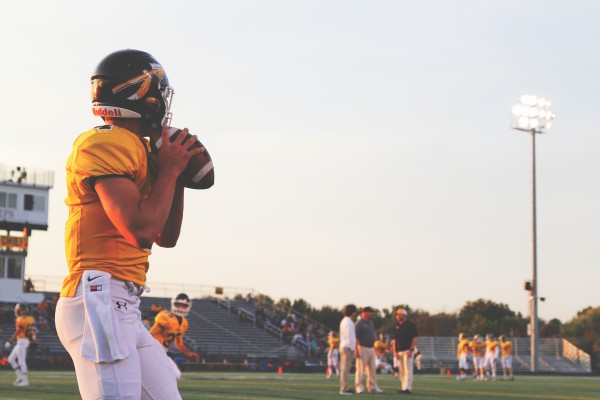
Fall is finally here, and you know what that means – Fall sports! There’s nothing quite like the anticipation before the kick-off, swish of a tennis racket, and the roar of a crowd after scoring a touchdown. However, with the incredible plays and tests of athleticism, comes the inevitable sports injuries. One of the most common injuries that occur in sports are muscle strains.
A muscle strain or “pulled muscle” occurs when your muscle is overstretched or torn during sports, heavy lifting, work tasks, or sudden acceleration or deceleration. When you tear the muscle fibers and the tendons attached to the muscle, you can damage small blood vessels. This can lead to local bleeding or bruising, and pain caused by irritation of the nerve endings in the area. Other muscle strain symptoms include swelling and redness, spasms, muscle weakness, limited range of movement and the inability to use the muscle at all.
Acute or chronic?
A mild or “acute” muscle strain is a muscle that may feel slightly stiff but is still flexible enough to use. Acute muscle strains, which often occur in cold weather, are a result of not warming up properly before physical activity, having poor flexibility, being in poor physical condition or experiencing overexertion and fatigue. Chronic muscle strains are caused by repetitive movements that include improper posture, holding your back or neck in an awkward position for long periods of time, or sports such as rowing, tennis, golf or baseball.
What’s RICE?
The symptoms of mild-to-moderate muscle strains usually go away within a few weeks, while more severe and chronic strains can take months to heal. Here are some simple tips—known as the RICE formula—for treating a mild-to-moderate muscle strain at home:
• REST the strained muscle for a few days, especially if movement causes an increase in pain.
• ICE is essential. Apply ice immediately after injury to minimize swelling. Keep the ice on your muscle for 20 minutes and repeat every hour on day one. For the next several days, apply ice every four hours.
• Compression helps. Wrap the affected area in an elastic bandage until the swelling goes down. Be careful not to cut off blood circulation by wrapping the bandage too tightly.
• Elevate, whenever possible, by keeping the injured muscle above the level of your heart
For severe and chronic muscle strains, it’s best to seek medical attention to ensure the right diagnosis and treatment.
Prevention is the best medicine
Of course, the best thing you can do for a muscle strain is to prevent it! While not all muscles strains can be prevented, you can help reduce your chance of developing one by being proactive:
• Stretch daily, especially before exercise. This increases blood flow to your muscles and decreases your risk of injury
• Try not to sit in one position for too long. Take breaks and change position
• Maintain good posture when standing or sitting
• Lift objects carefully by keeping your back straight, bending at the knees and lifting with your legs
REFERENCES
http://www.healthline.com/health/strains
http://www.webmd.com/fitness-exercise/guide/muscle-strain
http://www.emedicinehealth.com/muscle_strain/page6_em.html
Take the First Step Towards Pain-Free Living Today

